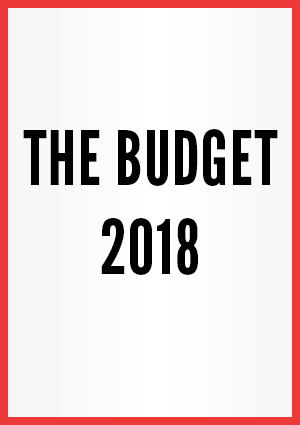Union Budget 2018 Expectations by Individual Taxpayers
- Blog|Income Tax|
- 4 Min Read
- By Taxmann
- |
- Last Updated on 25 January, 2021
Union Budget 2018-19:
1. Standard Deduction for Salaried Employees:
2. LTA Benefits for Foreign Travels:
As of now, an employee is allowed to claim exemption for the Leave Travel Allowance or LTA on domestic vacations, i.e. a trip taken to any destination anywhere within India. Originally this exemption was intended to promote Indian Tourism among the domestic travellers. However, it is not in pari-materia with the current scenario where travelling to some overseas destinations is found to be cheaper than visiting Indian travel destinations. Thus it is recommended that the benefits of this exemption should be extended to the travels to the foreign destinations as well.
3. Revision of Limits for Salaried Employees:
4. Increase in the Limit of Medical Reimbursements:
In the year 1999, Government introduced the special deduction of Rs. 15,000 towards expenses reimbursed by employer in relation to medical expenses. However, in the past 18 years, cost of medical treatments has witnessed a manifold increase. It is, therefore, recommended that this exemption limit should be raised to a minimum amount of Rs. 50,000, keeping in consideration the hike in the cost of medical treatments.
5. Increase in the time period to buy new house for Sec. 54 or 54F exemptions:
6. HRA –Add More Cities to ‘Metropolitan’ Category:
The Income tax Act provides for an exemption to the House Rent Allowance received by an employee for the rent it pays for his residential accommodation. Currently, the employee can claim higher deductions for HRA if he is residing in any of the four metropolitan cities such as Delhi, Mumbai, Chennai and Kolkata. Apart from these 4 cities, the rental charges in cities like Bengaluru or Hyderabad are equal or even higher than the rent charges in the cities like Delhi or Kolkata. This has been partly due to the fact that in the last few decades, some of the Indian cities has seen steep rise in development in their infrastructure which has led to an increase in the rental charges. As a result there is an urgent need for the inclusion of cities like, Bengaluru, Hyderabad, Pune, Ahmedabad, Jaipur, Noida, Gurgaon, etc. in the category of metropolitan cities.
7. Raise the Maximum Threshold of Deduction under section 80C:
Disclaimer: The content/information published on the website is only for general information of the user and shall not be construed as legal advice. While the Taxmann has exercised reasonable efforts to ensure the veracity of information/content published, Taxmann shall be under no liability in any manner whatsoever for incorrect information, if any.

Taxmann Publications has a dedicated in-house Research & Editorial Team. This team consists of a team of Chartered Accountants, Company Secretaries, and Lawyers. This team works under the guidance and supervision of editor-in-chief Mr Rakesh Bhargava.
The Research and Editorial Team is responsible for developing reliable and accurate content for the readers. The team follows the six-sigma approach to achieve the benchmark of zero error in its publications and research platforms. The team ensures that the following publication guidelines are thoroughly followed while developing the content:
- The statutory material is obtained only from the authorized and reliable sources
- All the latest developments in the judicial and legislative fields are covered
- Prepare the analytical write-ups on current, controversial, and important issues to help the readers to understand the concept and its implications
- Every content published by Taxmann is complete, accurate and lucid
- All evidence-based statements are supported with proper reference to Section, Circular No., Notification No. or citations
- The golden rules of grammar, style and consistency are thoroughly followed
- Font and size that’s easy to read and remain consistent across all imprint and digital publications are applied








 CA | CS | CMA
CA | CS | CMA



Comments are closed.